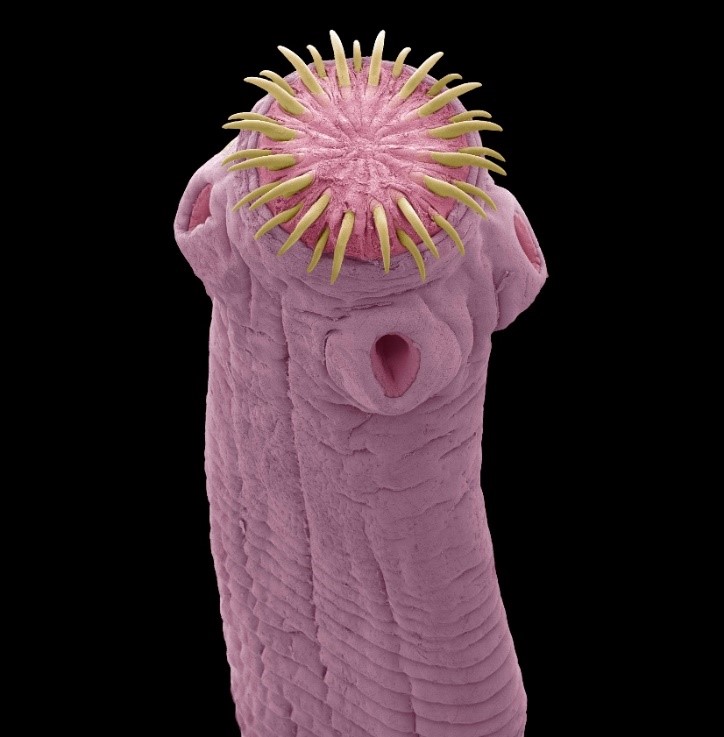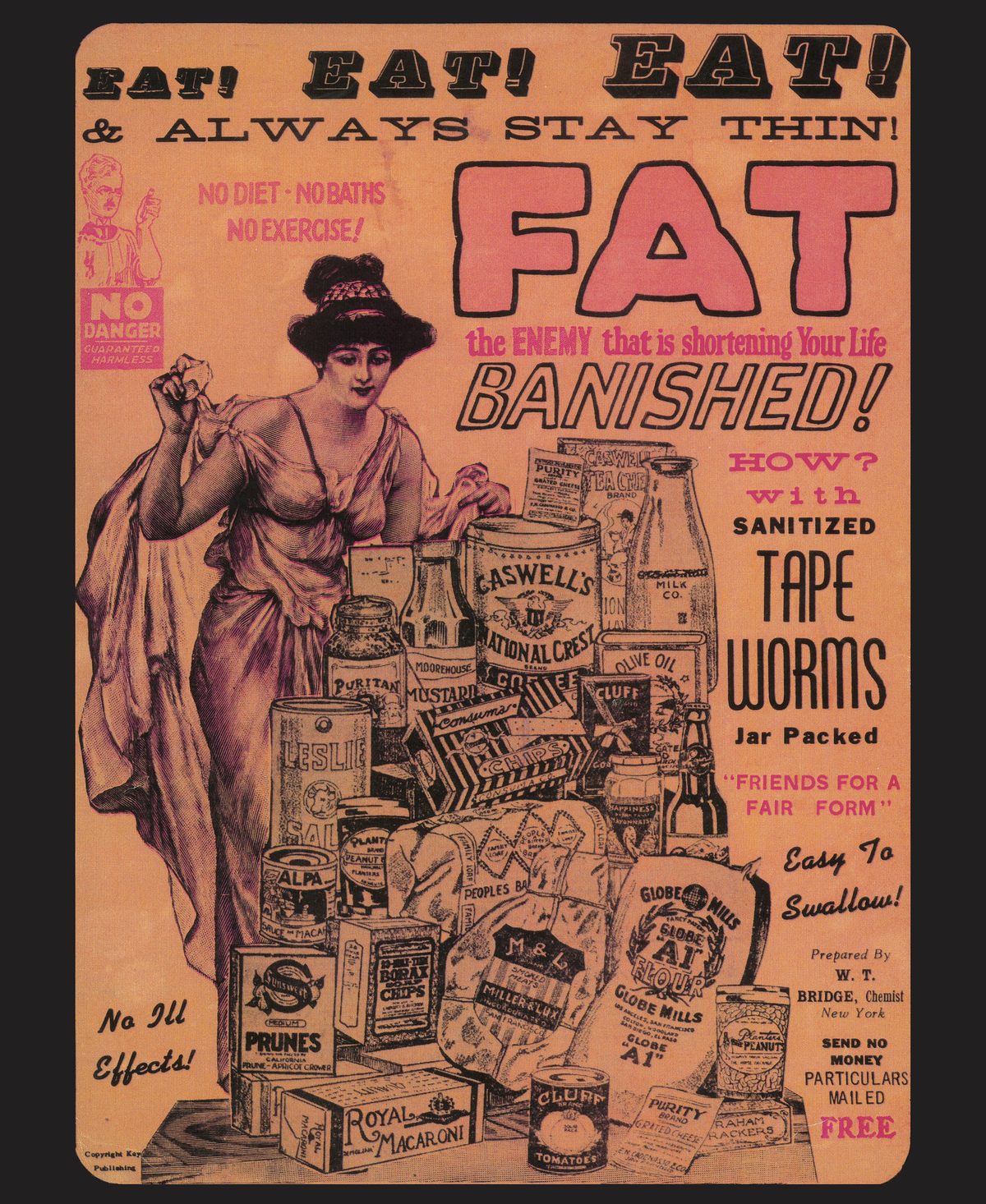
Good morning, patient. Please forgive me if I’m a bit unfocused today… I’m rather hungover. Yes, I know the Divisional Round was four days ago.
I see your charts are saying you’re complaining of nausea and headaches… are you a Bills fan, by any chance? I see. Yes, I’d be sick after that OT loss too.
I just have a few questions to ask, then. First off, have you had any drinks in the last week or so?
Two hundred? Ah, very well. And have you mixed any prescription medication with that? No? Huh. Lightweight.
Very well, then. I suppose, perhaps, we’ll consider something else. Have you eaten anything in the last little while that you wouldn’t have normally consumed?
You were at the Anchor Bar on Sunday, going hard on the buffalo wings? Hmmmm.
Well, that place is a tourist dive, you know. I don’t want to say you should’ve known better, but I’ve seen a case like yours before.

TAPEWORMS: THE DIET SECRET THEY DON’T WANT YOU TO KNOW ABOUT
What are the positives of this treatment?
The humble tapeworm – belonging to the Eucestoda subclass – are believed to be around 270 million years old, and for their entire existence, they have been parasites. Human beings can be affected by a number of different species of tapeworms, but the most common ones found in our digestive tracts are Taenia solium (found in undercooked pork), Taenium saginata (found in undercooked beef), the genus Diphyllobothrium (from fish), and Hymenolepis and Echinococcus (from unsanitary cooking conditions). Regardless of species, tapeworms share a number of key characteristics: they’re flat, lack a mouth, stomach, or eyes, and receive nutrients by latching onto a host’s digestive lining through a series of small hooks. They’re also hermaphroditic, and while they prefer to cross-fertilize between different tapeworms, they can self-fertilize if necessary, and reproduce by laying eggs. In some species, these eggs hatch outside of the original host’s body, before being consumed by a new host. Some adult tapeworms can live for up to thirty years, and can reach as long as eighty feet if the environment provided by the host is ideal. These are gross, disgusting animals that cannot survive outside of a host’s body.

The logic is simple, really – ingest a tapeworm (or, at least, a pill containing a tapeworm egg that will hatch, grow and mature into an adult tapeworm), and you’ll be able to eat as much as you want, due to the worm leeching precious nutrients out of your digestive tract – and you won’t even be able to feel a thing! When you’ve finally reached your target weight, you take an anti-parasitic pill and excrete the tapeworm. Dead easy.
In theory, the idea is genius.
What are the negatives of this treatment?
In practise, the idea is wildly unsafe. Tapeworms can cause a huge variety of symptoms in their hosts, from minor things like fatigue, nausea, diarrhea, fatigue, and vitamin deficiencies, all the way to horrifying things like meningitis, dementia, cysts, and epilepsy. Not only this, but the actual process of removing a tapeworm or other gut parasites can sometimes be a highly unpleasant experience for a patient, as anti-parasitic drugs like Biltricide, Albenza or Alinia may have similar side effects as the parasitic infection itself. Short of using these anti-parasitic drugs, there’s virtually no way of knowing if a tapeworm has left the host; while many do leave entirely on their own, the lack of symptoms in many instances makes it a real guessing game.
What are some real life examples of this treatment?
Victorian-era England was one of the strangest places and periods in all of human history; tapeworm diets were allegedly a part of the rapidly-growing beauty and diet industry. Considering that feminine beauty standards of the era expected the average woman to appear as though she was suffering from tuberculosis at all times, there’s no wonder that these diet “pills” potentially had a large market. The pills were said to contain a tapeworm egg, although this is apparently unlikely as worms need to have hatched already in order to successfully make the migration into a new host. The pills may have actually been a scam, but with the prevalence of undercooked meat and poor hygiene, tapeworms were still a regular concern for many people in the mid-19th century.

Other stories exist of people placing a glass of milk at both their mouth and their anus to try and lure the tapeworm out… and once again, I question the efficacy of these methods. Liquid does seem to be a common theme in trying to extract the worms, however.

An Iowa woman made the news in 2013 after she willingly ingested a tapeworm to try and shed a few pounds… though she quickly confessed to her ridiculous treatment by calling the Iowa Department of Public Health to find a suitable treatment.
Tapeworms were also reported to have been used by dieters in Hong Kong back in 2010 by the UK’s The Telegraph.
At least tapeworm diets are already ruled to be illegal by the United States Food and Drug Administration.
How can we improve this treatment for the future?
Perhaps the real issue with tapeworms is the American diet. As a former Chargers employee, I can’t help but think that a more varied, healthy palate would be a far more appropriate choice; it’s certainly a possibility that tapeworm symptoms are perhaps caused by the parasite being unhappy with the nutritional choices of the host.
pf changs is so good
— Los Angeles Chargers (@chargers) February 22, 2007
soo hungry need to find my wife and head to pf changs
— Los Angeles Chargers (@chargers) February 20, 2007
***
Information for this article taken from here, here, here, here, here, here, here, here, here, here, here, here, here, here, here, and here.